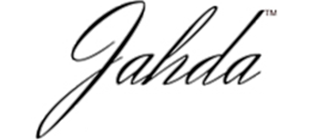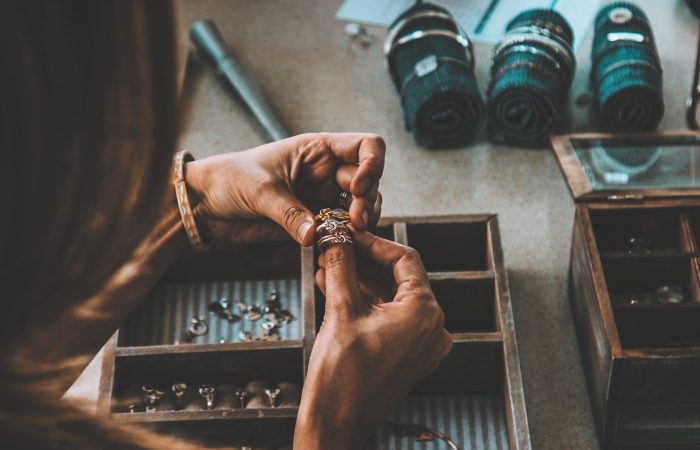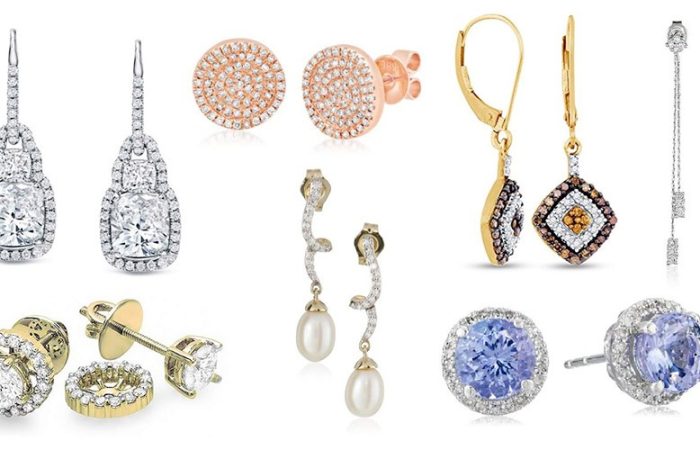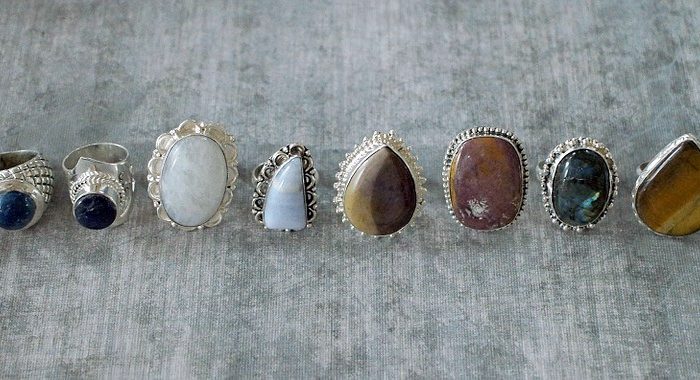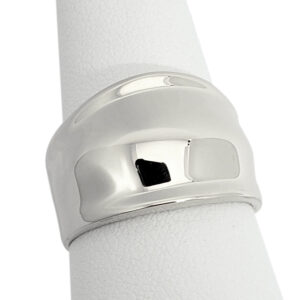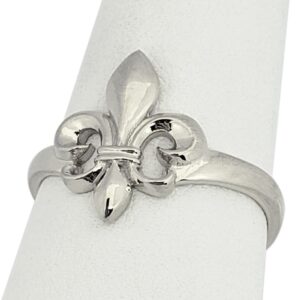When buying gold jewelry, many customers are very skeptical about the authenticity and the quality of the pieces. This is because many online shops and even major retail jewelry suppliers make confusing or misleading claims (for example: “gold tone,” “gold dipped,” and “gold finished”). Customers often do not find out that their jewelry is not real until months or even years down the line – and by that time it is often difficult to get a refund from the original seller. So how can you determine whether or not the gold you are buying is actually what the seller claims? In this article, I will explain how to make sure that your recently purchased gold jewelry (or even old questionable jewelry that may be part of your collection) is in fact a solid, real, authentic piece.
If it is stamped with 10K, 14K, or 18K, it’s real… right?
No, not exactly. The vast majority of real gold jewelry will be marked with a karat stamp, which gives the gold purity of the piece. On rings, this is usually on the inside of the band, and on pendants and chains, it is typically on the back, end caps, or clasps. However, you should never trust a hallmark alone.
Nowadays, any retailer can purchase a set of stamps that will allow them to illegally mark their jewelry with any karat they would like. In Sacramento, where our workshop and office is located, there are dozens if not hundreds of rings and chains marked with an 18K stamp going around, with consumers being scammed out of their hard-earned money.
So the stamp means nothing?
Having a karat mark is a great indicator that your gold jewelry is actually real, but it is equally important that the source of the gold is taken into account.
If you have purchased the piece from a local shop that has been around for years, or an online supplier who has many credible and positive reviews, and it is marked with a karat stamp, you can almost guarantee that it is the real deal. Equally as reassuring, you can rest easy knowing that if there is any question about the authenticity of your item, you know you can always contact the original seller with any questions you have about it – even if it is years after your purchase.
If, however, you purchased the item from a private individual (for example: Craigslist, OfferUp, or a stranger in public claiming to be in a pinch for money), or a fly-by-night portable jewelry stand, you run the risk of being the victim of a scam. If purchasing from a private individual, always make arrangements with a local gold shop that will allow you to meet the seller in their shop and verify the authenticity of the item. Many small shops will do this as a courtesy for no charge.
What if it sticks to a magnet?
The magnet test, while very useful, can also be fairly confusing as it is not always 100% conclusive. Magnets will only stick to items containing iron, so the large majority of real gold jewelry will never stick to a magnet. However, most household magnets do not have the strength to stick to fake gold jewelry. Instead, what is called a “rare earth magnet” should be used as it has enough strength to stick to fake gold jewelry that contains iron.
So if it doesn’t stick to a magnet, it’s real?
This is one of the most common mistakes people make when testing gold. If a piece of jewelry is made from brass or copper, which are among of the most commonly gold-plated metals, it will not stick to a magnet. A magnet should just be used as a preliminary test.
So if it sticks to a magnet, it’s fake, right?
To make matters even more confusing, some hollow gold jewelry will contain a very small amount of iron and produce a tiny magnetic pull even though it is in fact real gold. However, if an item is not hollow, and it sticks to a magnet, you can almost guarantee it is not authentic.
So the bottom line about magnets is: start by testing with a magnet but do not end your test there.
Obvious visual signs
One of the easier ways to identify fake gold jewelry that has been worn for a while is to simply look very closely at the item in question. If you can see a spot where red or gray color is showing through the gold, the item is fake. Gold jewelry is the same color all the way through, so even after years of wear, the edges of a pendant or ring band will not show red or gray coloring.
If your item has stones in it, look closely around the border of the stones for prongs. If the stones do not have prongs over the edges, they are likely glued into place and it is more than likely your piece is not real gold.
How else can you tell if gold is real?
Acid testing
For customers who collect gold jewelry and purchase multiple pieces per year from different sellers, buying a gold testing kit online is a great investment. These kits can be purchased for as little as $20. There are very, very few pieces on the market that can fool an acid test. With a bit of practice and watching a few YouTube videos on how to use the kit, customers can use the same method as most professional gold buying shops. Some experience testing different karats and metals is needed to be extremely proficient at testing gold with acid, so if you are ever in doubt of the test results, reach out to a professional for advice. I routinely help local customers verify the authenticity of their gold, and even my online customers contact me for help from time to time.
Simply take it to a local gold shop!
As mentioned, the best way to find out if your item is real is to take it into a local gold shop. Some shops have extremely advanced gold testing equipment, which is beyond the scope of this article. Local gold shops will have an experienced professional who has seen and tested hundreds of pieces, so they can tell you almost immediately whether or not your item is fake. Try to visit a smaller shop rather than a retail chain; most retail jewelry chains have trained sales staff, but smaller shops tend to have staff who are experienced with actual metal testing.
Now it’s time to check your jewelry!
While looking for a karat stamp and checking to see if your jewelry is magnetic cannot provide a complete guarantee that your item is real gold, when used in combination with more advanced methods like acid testing, it is certainly possible to accurately test gold jewelry from home with some practice. For those who just have one or two pieces they would like to verify as real, save yourself the stress and call a local shop for guidance. Most shops will be more than happy to help.
As mentioned, to avoid purchasing fake gold jewelry in the first place, go to a shop that is reputable and you can rest easy knowing they stand behind their products and can be reached if needed in the future. If you have more specific questions about your own items or have any input or feedback on knowing whether your jewelry is real or fake, feel free to contact me by phone at 916-533-6907, send us a message, or leave a comment.
Still have more questions in your head! Luckily we have answers—all your inquiries regarding this precious metal will be answered with the help of this blog:
